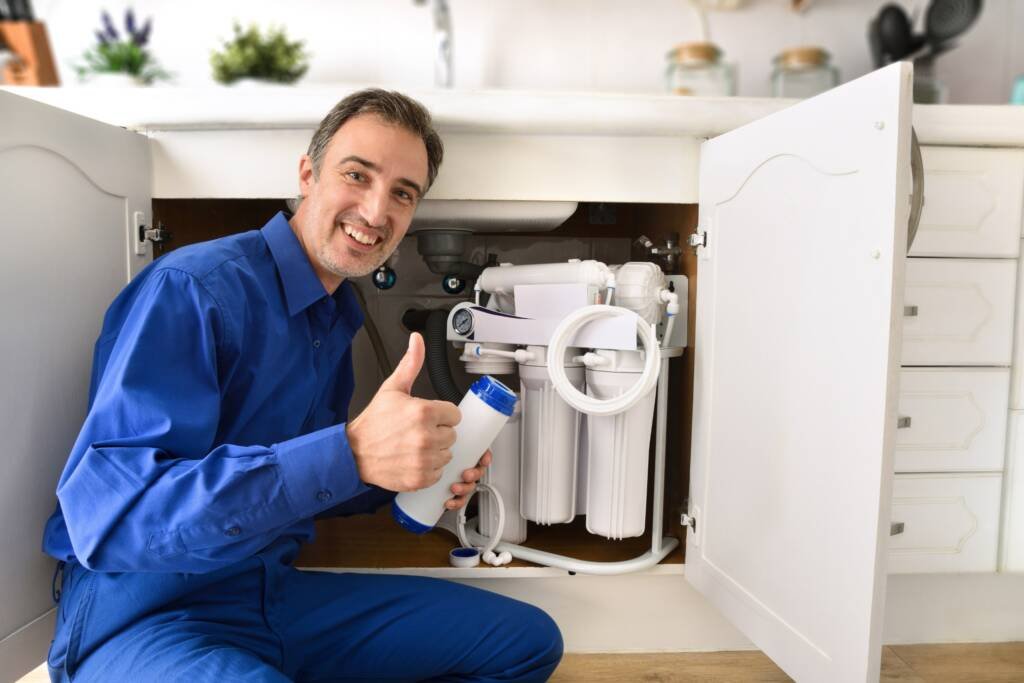Reverse osmosis is a process that has become increasingly popular in recent years due to its ability to filter out impurities from water. It passes the water through a semipermeable membrane, which allows clean water molecules to pass through while trapping contaminants and other pollutants on one side of the membrane. While this process yields purified drinking water, it can also strip out essential minerals that benefit your health. Fortunately, there are ways you can enjoy all the benefits of reverse osmosis without losing vital minerals from your drinking water.
Table of Contents
1. What is Reverse Osmosis and why it’s important?

Reverse osmosis is a method that purifies water by eliminating impurities and contaminants. The process involves pushing water through a semipermeable membrane that allows only clean molecules to pass through, trapping undesired substances on one side of the membrane. The purified water that results is free of pollutants and impurities, making it ideal for both household and industrial use.
Reverse osmosis is essential because it helps provide safe drinking water. By removing contaminants from our drinking water, we can reduce health risks associated with consuming polluted water, such as gastrointestinal problems, skin rashes, and diseases like cholera. Furthermore, using reverse osmosis to filter out heavy metals from our drinking water can help prevent chronic illnesses caused by lead poisoning and other toxins.
In addition to safe drinking water, reverse osmosis can help preserve the environment. By removing pollutants from waterways, reverse osmosis helps to reduce eutrophication (an imbalance of nutrients) which can cause algae blooms and damage aquatic ecosystems. It can also minimize toxic wastewater discharges into rivers and lakes – something that traditional filtration methods are often unable to do.
2. Understanding the Pros & Cons of Reverse Osmosis.
Reverse osmosis is a process that has some advantages and disadvantages. It can be used in various situations, from industrial manufacturing to residential water filtration. Understanding the pros and cons of reverse osmosis can help you decide if it’s right for your needs.
Pros of Reverse Osmosis:
• Highly effective at removing contaminants from water, including microscopic particles, heavy metals, and bacteria.
• Can filter out impurities down to 0.0001 microns in size.
• Requires very little maintenance and can last many years with proper care.
• Environmentally friendly process because it does not produce any hazardous by-products.
• Produces high-quality drinking water that is free from harmful substances and tastes excellent.
• Can be used to purify brackish or salt water into fresh drinking water.
Cons of Reverse Osmosis:
• Can be expensive due to the cost of purchasing and installing the system.
• Wastewater production is higher than other filtration systems due to the need to flush out impurities from the membrane filters.
• Not all substances are removed from the water – some trim residual levels may remain after filtration.
• Can reduce water’s mineral content, which may affect flavor or health benefits depending on local regulations and guidelines.
3. How to Get All the Benefits of Reverse Osmosis without Losing Vital Minerals?

Although reverse osmosis is a good filtration technique, it has the disadvantage of removing essential minerals from the water. However, there are ways to keep the vital minerals in your drinking water while enjoying reverse osmosis’s benefits.
- One option is to use a remineralization filter. This filter reintroduces vital minerals, like calcium and magnesium, into the water after it has undergone reverse osmosis filtration. Alternatively, you can use an alkaline water filter or an ionizing water filter that not only filters out contaminants but also adds essential minerals back in.
- Another option is to look for reverse osmosis systems with built-in mineral cartridges. These cartridges contain high concentrations of beneficial minerals released after the water undergoes reverse osmosis filtration. Most of these systems don’t require additional maintenance or replacement of their mineral cartridges either.
- You can enjoy the benefits of reverse osmosis without losing vital minerals by opting for a remineralization filter, an alkaline or ionizing water filter, or buying a reverse osmosis system with its mineral cartridge. Not only will this provide better-tasting and healthier drinking water, but it will reduce your environmental impact too.
4. The Different Types of Reverse Osmosis Systems Available.
There are many different types of reverse osmosis systems available in the market. Some of the most common ones include:
- Under-sink Reverse Osmosis System – these systems fit neatly under your kitchen sink and provide filtered water through a separate tap.
- Whole House Reverse Osmosis System – filters the entire home’s water supply, giving you clean, healthy water.
- Portable Reverse Osmosis Systems – these small, portable machines are perfect if you don’t want to install a permanent system or need purified drinking water while traveling.
- Countertop Reverse Osmosis Systems – these systems attach directly to your existing faucet and provide purified drinking water without the need for plumbing.
No matter what type of reverse osmosis system you’re looking for, there is sure to be one that fits your needs and budget. With various options available, enjoying the pure, healthy drinking water provided by reverse osmosis has always been challenging.
5. Tips for Maintaining Your Reverse Osmosis System.

Reverse osmosis systems are built to last, but they still need to be correctly maintained to keep them running at their best. Here are a few tips for keeping your reverse osmosis system in top condition:
• Regularly change the filter cartridges according to the manufacturer’s instructions.
• Make sure all the connections and hoses are appropriately tightened and leak-free.
• Clean any sediment or dirt buildup from the membrane filters regularly. This will prevent bacteria and algae growth as well as prolong its lifespan.
• Monitor your system for signs of deterioration, such as low water pressure or slow flow rate.
• Check the pH levels of your water regularly and adjust if necessary.
Following these simple maintenance steps ensures that your reverse osmosis system runs smoothly and efficiently for many years.
6. Additional Benefits of Using a Reverse Osmosis System.

Aside from providing clean, pure drinking water, reverse osmosis systems also have many additional benefits. They can:
• Reduce energy consumption: Using a reverse osmosis system can reduce your home’s overall energy consumption because it does not require any electricity to operate.
• Save money: By removing contaminants from your water supply, you won’t have to spend as much on bottled water or store-bought filters.
• Improve health: Since reverse osmosis systems remove harmful substances from the water, they can help improve your family’s overall health and well-being.
• Enhance flavor: One of the most significant advantages of using a reverse osmosis system is that it can drastically improve the taste of your drinking water.
By utilizing the many benefits of reverse osmosis systems, you can provide your family with clean, safe, great-tasting drinking water daily. It’s an investment worth making and will provide your home with healthy, refreshing water for years to come.
Conclusion
Reverse osmosis systems offer a great way to filter out impurities and contaminants from your water supply while preserving the vital minerals in your drinking water. They are easy to install, require minimal maintenance, and have many benefits for you and the environment. With all these advantages, it’s no wonder why reverse osmosis systems are becoming increasingly popular. So, if you want healthier, better-tasting drinking water, consider investing in a reverse osmosis system today. You won’t regret it!






2 Comments